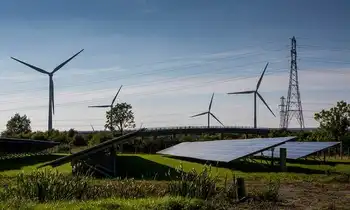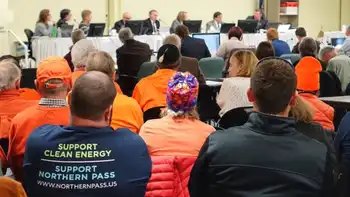Wind farm faces protest over bird kills
It's estimated that as many as 44,000 predatory birds have been killed over the past two decades in the Altamont Pass, east of San Francisco.
Although the rows of spinning blades turn wind into electricity and make Alameda County less dependent on fossil fuel, they are also the end of the line for many birds whose annual migration route includes the pass. Concentrating on their prey on the ground, the birds fly into the blur of the windmill blades.
The bird deaths have led some environmental groups that support wind power to oppose permits for the Altamont site, arguing that the industry is not doing enough to stop the deaths.
In Alameda County, several environmental groups are trying to persuade the county to stop reissuing permits for the turbines without requiring additional environmental studies.
The county zoning board approved permanent permits for 1,400 windmills in November, but Californians for Renewable Energy and the Center for Biological Diversity say the county approved the permits illegally.
"The level of bird kills is just astronomical. You couldn't have picked a worse place to put a wind farm. It's just been an accepted cost of doing business out there," said Jeff Miller of the Center for Biological Diversity.
Steve Stengel, a spokesman for Florida Power & Light Co., which owns about half of the 7,000 wind turbines at Altamont, said the industry has been trying to find ways to reduce bird kills.
Past attempts included painting the tips of turbine blades to make them more visible, installing screens around generators and adding devices to discourage perching on the towers.
But these failed to substantially reduce deaths. Among measures now being discussed is letting grass below the turbines grow taller and removing rock to provide cover for prey and discourage birds from flying in the area.
Related News

Wind and solar make more electricity than nuclear for first time in UK
LONDON - Wind farms and solar panels produced more electricity than the UK’s eight nuclear power stations for the first time at the end of last year, official figures show.
Britain’s greenhouse gas emissions also continued to fall, dropping 3% in 2017, as coal use fell and the use of renewables climbed.
Energy experienced the biggest drop in emissions of any UK sector, of 8%, while pollution from transport and businesses stayed flat.
Energy industry chiefs said the figures showed that the government should rethink its ban on onshore wind subsidies, a move that ministers have hinted could happen soon.
Lawrence Slade, chief executive…





